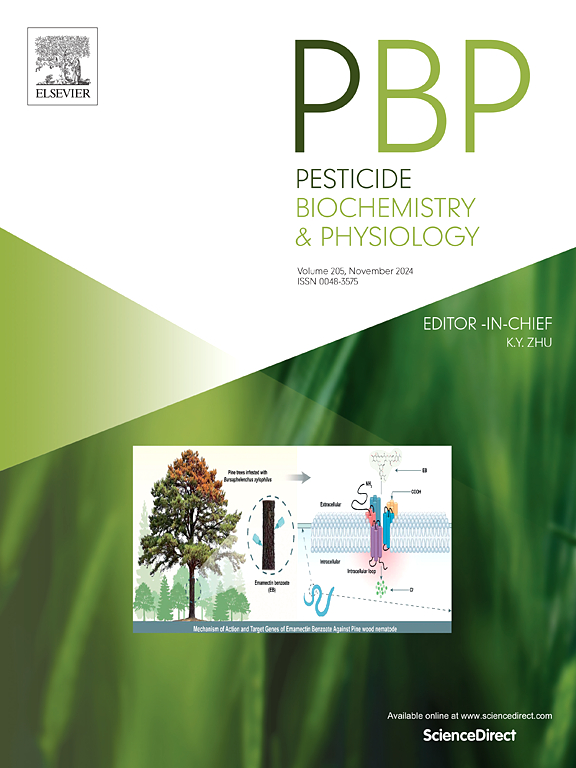CRISPR/Cas9–mediated editing of the melanization gene ebony in the 28-spotted ladybeetle, Henosepilachna vigintioctopunctata
IF 4.2
1区 农林科学
Q2 BIOCHEMISTRY & MOLECULAR BIOLOGY
引用次数: 0
Abstract
The melanization process, which is essential for the proper functioning of the cuticle, has been extensively investigated for its enzymatic roles and physiological effects. Henosepilachna vigintioctopunctata, a significant pest species, presents considerable economic threats. However, due to the variable efficiency of RNA interference for genetic manipulation, establishing a CRISPR/Cas9 system is crucial for providing a more precise and reliable method for functional genomics in this non-model insect. In this study, we first utilized RNAi to investigate Hvebony, which encodes N-β-alanyldopamine, a critical compound in cuticle melanization. Subsequently, we introduced CRISPR/Cas9 for the first time in H. vigintioctopunctata. RNAi experiments revealed that knockdown of Hvebony resulted in abnormal melanin accumulation and low mortality rates, indicating its involvement in cuticle tanning. A novel CRISPR/Cas9 workflow was established, successfully resulting in the knocking out of Hvebony and the creation of a stable mutant strain characterized by dark pigmentation and low fitness costs. This study establishes Hvebony as a promising molecular marker for genetic studies in H. vigintioctopunctata. Moreover, it can be utilized in the development of genome editing control strategies and for analyses of gene function in H. vigintioctopunctata.

求助全文
约1分钟内获得全文
求助全文
来源期刊
CiteScore
7.00
自引率
8.50%
发文量
238
审稿时长
4.2 months
期刊介绍:
Pesticide Biochemistry and Physiology publishes original scientific articles pertaining to the mode of action of plant protection agents such as insecticides, fungicides, herbicides, and similar compounds, including nonlethal pest control agents, biosynthesis of pheromones, hormones, and plant resistance agents. Manuscripts may include a biochemical, physiological, or molecular study for an understanding of comparative toxicology or selective toxicity of both target and nontarget organisms. Particular interest will be given to studies on the molecular biology of pest control, toxicology, and pesticide resistance.
Research Areas Emphasized Include the Biochemistry and Physiology of:
• Comparative toxicity
• Mode of action
• Pathophysiology
• Plant growth regulators
• Resistance
• Other effects of pesticides on both parasites and hosts.

 求助内容:
求助内容: 应助结果提醒方式:
应助结果提醒方式:


